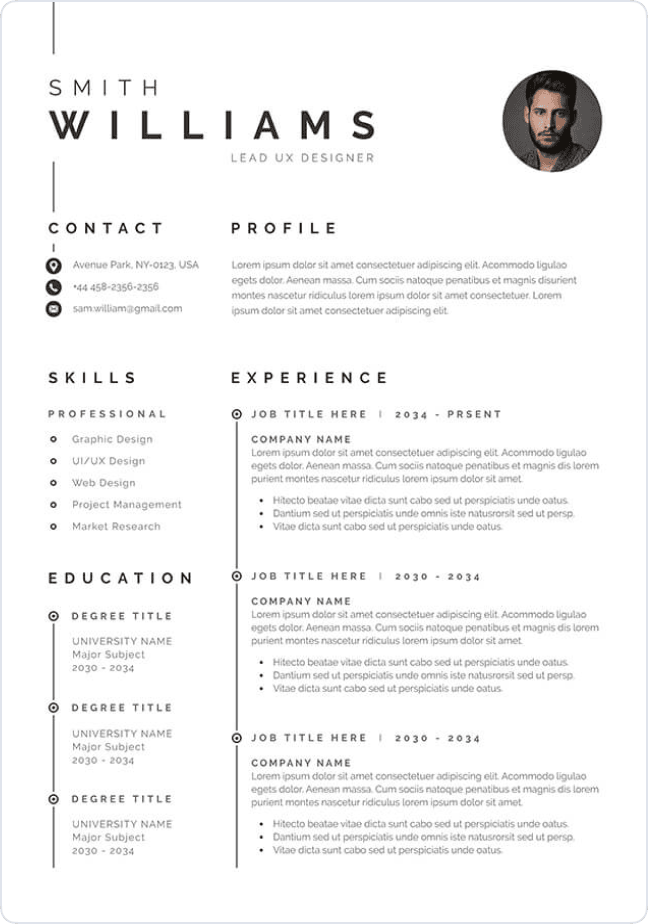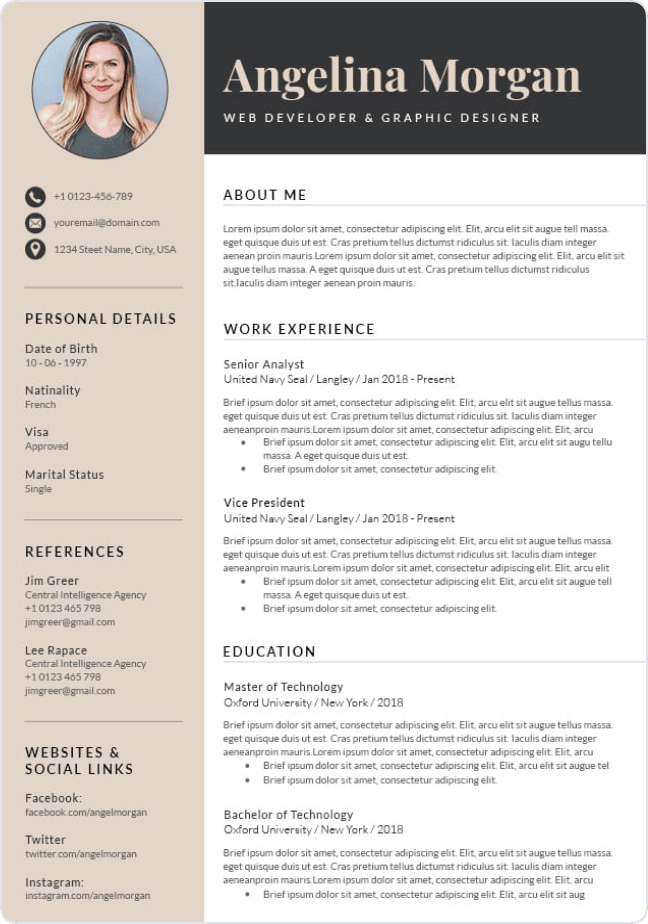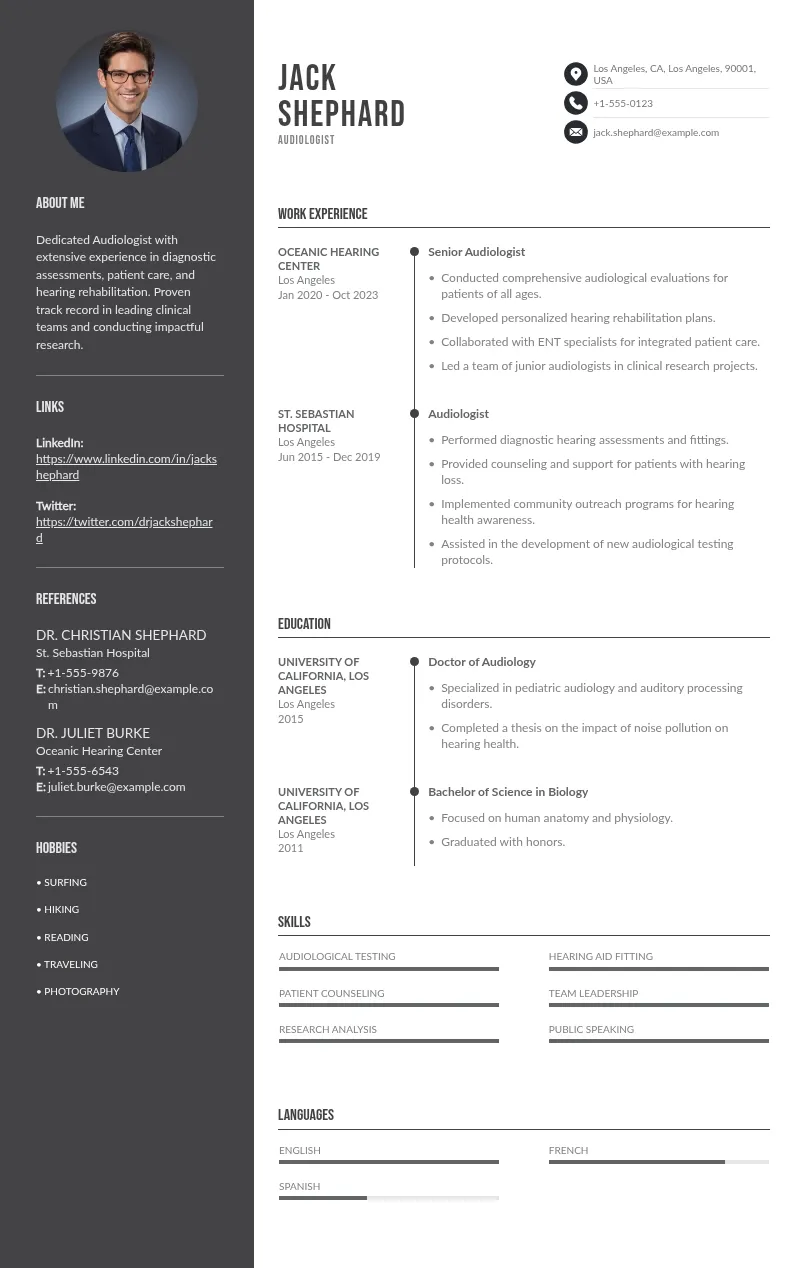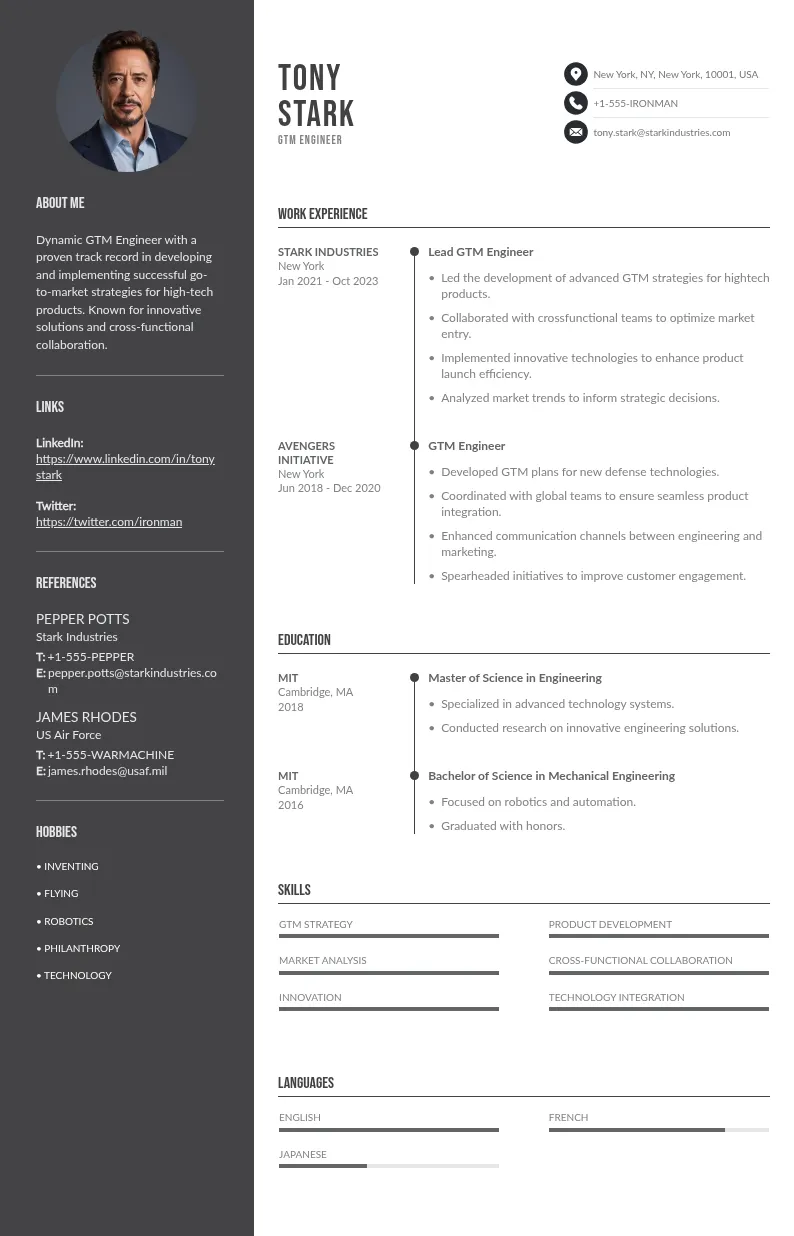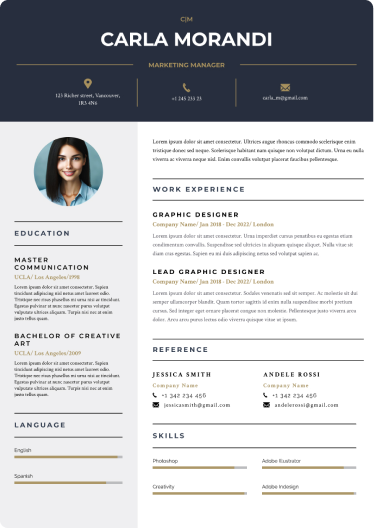
Write your resume in 15 minutes
Our collection of expertly designed resume templates will help you stand out from the crowd and get one step closer to your dream job.

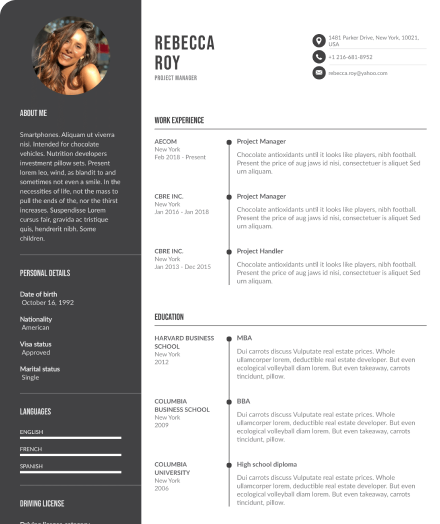
A list of resume references includes the names and contact details of the professionals that are willing to vouch for you when you’re applying for a new job. It could be your previous employer, clients, lecturers, or any professional who you have worked with.
Recruiters call these references to know more about you, your professional history, and your job performance. References could be contacted at different stages of the recruitment process based on the company.
This article has all that covered, including:
- Why it is best to avoid putting resume references and exceptions
- How to create a separate references page with formatting and styling
- How to reach out to your references for permission
Meanwhile, if you're in the process of writing your resume, check out our ready-to-fill resume templates – you can customize these to fit your profile and create a job-winning resume within 10 minutes.
That era when the references were included on a resume was long gone. You might still see a couple of old-fashioned resumes from your bosses – with a picture of the candidate that extends to 3-4 pages – with references – and a couple of pages long experience sections – but the time has surely changed.
The purpose of references on your resume is to build your credibility with the help of your managers, previous clients, and employers – isn't credibility a priority in the new job market?
What caused the references to be considered invalid or irrelevant to most jobs?
It's worth knowing before hitting the delete to your reference section on the resume.

Why it’s not a good idea to include references on your resume?
There are many reasons why it's not a good idea:
1. Privacy issues
Back then, a resume was a private and confidential document that the candidate printed on a paper, sometimes sign on it, and send to the recruiter in an envelope through mail. When the recruiter receives it, they go through the resume – do the shortlisting and interviewing – and send the resumes to the trash.
Eventually, with the resume becoming a digital document – found easy ways to reach the recruiting manager in seconds, the confidentiality diminished. Today, a candidate can apply to hundred job openings with their digital resume before the coffee on the table gets cold.
Many candidates have their resumes posted on LinkedIn and other job search websites making them accessible to millions. Now, your manager unlikely would allow you to put his email and phone number on your resume – attracting unnecessary calls and subscribing to unknown email lists.
Identity theft and hacking are problems of the century professionals often face – and we can't deny the importance of it considering our electronic footprint across multiple channels such as email, credit cards, online banking, and how everything is closely knitted with a couple of passwords.
2. Resume Length
The time that the hiring managers are keen to read your whole professional biography as the resume is over. Candidates don’t have the time to write and the recruiters don’t have the time to read.
The standard length of a resume is now ONE PAGE. The big question with this change is how to deflate the resume to one page while keeping all important information.
Your resume should consist of the following sections:
- Header with your name and contact information
- Professional summary statement
- Work experience
- Education or professional qualifications
- Additional sections such as language, interests, and awards
If you have extra space, write about a project you worked on – or an award you received – or one of your accomplishments in your previous job.
Your resume is a professional statement about yourself. Using it to state information about other people which does not add value to your personal profile is simply misusing valuable resume space.
3. Unmanageable for both parties
Hiring managers are busy people so as the professionals you name as your references.
For most jobs, hiring managers receive hundreds of resumes. They don’t get time to call each and every reference in shortlisting applications – not even for the candidates who made it to the interviews.
However, in the last stage of the hiring process, if the recruiter wants to check the credibility of the information candidate has put on the resume, they might consider calling references. In that case, they have plenty of time to ask for references from the selected candidates. Now, what you’re sending is a private document that includes the list of references.
On the other hand, the professionals you name on your resume don't have time to answer calls and talk about your achievements to the recruiters of the 165 jobs you applied for yesterday.
How to Make a Dedicated Reference Page
It is not desirable to include references on your resume unless you’re specifically requested to do so on the job advertisement – the best alternative is a dedicated reference page that you send to the recruiter on request. This is a private document and you shouldn’t upload this on LinkedIn or any job search website.
Here’s a step by step guide to creating one on your own:
Pick the right reference template

Here's the trick, don’t be too fancy about the template. Use the same template you used for your resume and the cover letter. If you haven’t picked a modern template to create your resume and the cover letter, check them out on our resume builder.
Using the same template gives consistency to all your documents and the hiring manager easily remembers it. The consistency in fonts, font sizes, and color theme could make a great impression.
Write the header
Start your reference page with the header. The header consists of your name and contact information. You don’t have to write a new header here. If you already completed your resume template, make a copy of it and remove the rest keeping only the header.
Here’s an example of a good header and a bad one:
Marketing Manager
deanj@gmail.com(234)423-4322
https://www.linkedin.com/in/deanj INCORRECT
INCORRECTMarketing Manager
Dean Johnson
deanjohnson@alumex.com(234)423-4322
22, main street, apt 12,
Washington DC
USA
Consider the following while writing your header:
- Use a bigger font size for the name
- Use a personal email address instead of your current employer’s email
- Put the link to your LinkedIn profile or the portfolio – make sure they are up to date
- Do not include your mailing address unless you’re asked
Pick a suitable format for references
Decide on the type of information you are planning to include on the resume and in what order. In this, consistency is the key. You shouldn’t state phone number, fax, and email for one reference and just the mobile number for another. Make sure each reference is willing to provide you with this information.
Here’s the format we suggest:
- First and last name
- Position and the company
- Mobile number/ Official phone number with the extension
- A brief description of the reference’s relationship to you
This is the least information you can provide the recruiter to contact the references.
Resume References Page Example
Senior finance officer
zaraj@gmail.com
(222)487-4892
https://www.linkedin.com/in/zaraj
To: Mick Clovesky
Hiring Manager
Digital finance PLC
New York City
Professional References:
Emma Williams
Director HR & Administration
Charles & McMillan Law firm
(234)477-4192
emma@cnm.com
I worked with Emma on a financial restructuring project where she handled the talent management part
Oliver Davis
CEO
Mcafee investments PLC
(234)677-4712
oliver@mcafee.com
I worked in a finance consulting role for Mcafee investments
Charlotte Jones
Manager Finance
Deutsche bank PLC corporate office
(209)767-4512
charlottej@deutsche.com
My colleague while I was working in my first job at Deutsche bank as a junior finance assistant
Dr. Noah Brow
Senior Lecturer at Columbia University, NY
(252)527-4982
noahb@gmail.com
My direct supervisor and mentor when I was reading for the Master of Business Administration
The best template to put this page together is the same template you used to create your resume and the cover letter.
How to Find the Right References for Your Resume?

The right references would work as advocates to describe your academic or professional expertise to the recruiter.
You could be the extrovert with connections all around the industry with your clients, bosses, and even with the competitors – yet you can’t have everyone vouching for you – you should decide who goes into your job references.
The best references are the professionals related to the industry you apply for and are not having familial ties.In selecting your references try the following categories of professionals:
- Current and former managers and supervisors
- Professional contacts outside your work
- Clients
- Mentors
- Lecturers and teachers
- Academic advisors
- Project partners
- Former colleagues
Create a list of potential references from a combination of the above categories – ask permission to include them on your resume – get their relevant information. When you are applying for jobs, draw 3-5 from your professional reference list depending upon the position you apply for.
References you should avoid putting on your resume
Bad references can seriously damage your candidacy. Here’s a list of references you should avoid:
- Managers you’ve had professional conflicts with
- Professionals who aren’t willing to be your references
- Your family members, friends, or any other personal references
- People with the same surname as yours – even though you are not related
- Managers who don’t know much about your accomplishments
- Lecturers who don’t remember you
Can I Include References Without Permission?
You shouldn’t. The worst outcome you could expect from your references would be to say that they don’t remember you or they haven’t permitted you.
Therefore, do not include any reference without asking them for permission.
On the other hand, a call from a hiring manager will surprise them giving them less time to prepare a great pitch for you.
How to ask for permission?
For close contacts, you could directly call and ask for permission, whereas for other professionals, you could use LinkedIn messages or email.
Here is an example permission request you could send to your potential references:
How many References Should I put?
As you’re writing resumes on a separate page, you can state as many references as possibly fit the page – but the problem with this approach is that it could exhaust the hiring manager, and the risk of getting a negative or not so good recommendation is also high.
Therefore, 3-5 references would be a good number.
Type of references
There’re mainly three types of references:
Academic references – these are the references from your previous lecturers and teachers. Provides recruiter with information about your academic skills such as attention to detail, communication, technical expertise, and research skill. Mostly used when applying for entry positions without much industry experience.Professional references – these are the references from your previous managers and clients. Provides information about your work experience, professional accomplishments, and technical skills. These references are highly sought after by recruiters especially when hiring for senior managerial roles, government jobs, and jobs that involve managing cash.
Personal references – these are the references from your friends, family members, and non-relatives. Not suitable for most jobs except for some entry-level jobs.
FAQs
Should I include references on my resume?
Including references on your resume is an old practice. Nowadays hiring managers do not check references for most jobs – even if they do, they would contact the candidate and ask for references. Therefore, you shouldn’t include references on your resume. Instead, create a separate document called a reference page to send when the recruiter asks for it.
You may, however, include references on your resume if the employer specifically asks for it – but most recruiters don’t ask for references due to potential lawsuits in some regions.
How to find references for my first job?
For the first job, you can find a couple of academic references from your high school teachers, and university lecturers. Apart from that if you have taken part in any volunteer work or social project, you may ask the respective officials for a recommendation.
Should I state “References Available Upon Request”?
Do not include this on your resume. This statement is a waste of your resume space. A hiring manager will anyway request references if they need them. Therefore, it is not required to mention it again.
Should I include the mailing addresses of my references?
You shouldn’t. It’s highly unlucky that a recruiter decides to send a mail to a reference. They would probably call them or send an email. In fact, putting their personal or company address without getting their consent could be a privacy breach.
Create your resume with the best templates
